Inside the Tank | Noon Whistle Brewing
Noon Whistle Brewing beers have become staples on the shelves of craft beer shops all over Chicago and the surrounding suburbs. From pale ales to stouts to sours to their well-known Gummy New England IPA series, the brewery has an extensive portfolio of beers.
We sat down with owner Mike Condon and their other owner and brewer Paul Kreiner to learn more about this small, but growing (1,900 barrels in 2017 and pacing for 4,100 barrels in 2018), brewery and do a deeper dive on some of their thoughts on topics related to the craft beer industry.
How did you get into beer?
P: I worked at a beer distributor soon after college, but we actually started getting into craft beer when we were both in college. We both went to Eastern Illinois University and there was a bar down there called Mad Hatter that was serving craft beer and at the time it was Sierra Nevada and La Fin Du Monde because he would sell them for like $2 or $3 a bottle. That’s how we kind of got into it.
I got into a beer distributor and I was there for 12 years and during probably my second or third year that I was there Sam Adams did a home brewing event. They brought everything you needed and that got me into home brewing and it took off from there. Mike would come over and we’d brew beer at my house and then eventually we started talking about it (a brewery) probably five or six years after I started home brewing.
M: He (Paul) was definitely more into brewing after college. We were all into beer, but it went to a whole other level for Paul. Being in the industry, being around it, you start getting really interested in the process of making it and home brewing went to another level for him. We had always talked about being business partners even back in college so we realized this could be the idea.
I remember brewing the first batch of home brew at Paul’s backyard – we ran the pot out and put it in the snow to try and cool it real quick. Everybody always gives me a hard time and asks if I’m a brewer, but I’m not. I drink more beer than I brew because I really don’t brew. That’s how it’s always been. We’d always go to Paul’s, he would brew, and we would stand around talking beer and hang out while he brewed and that’s pretty much how it still is today.
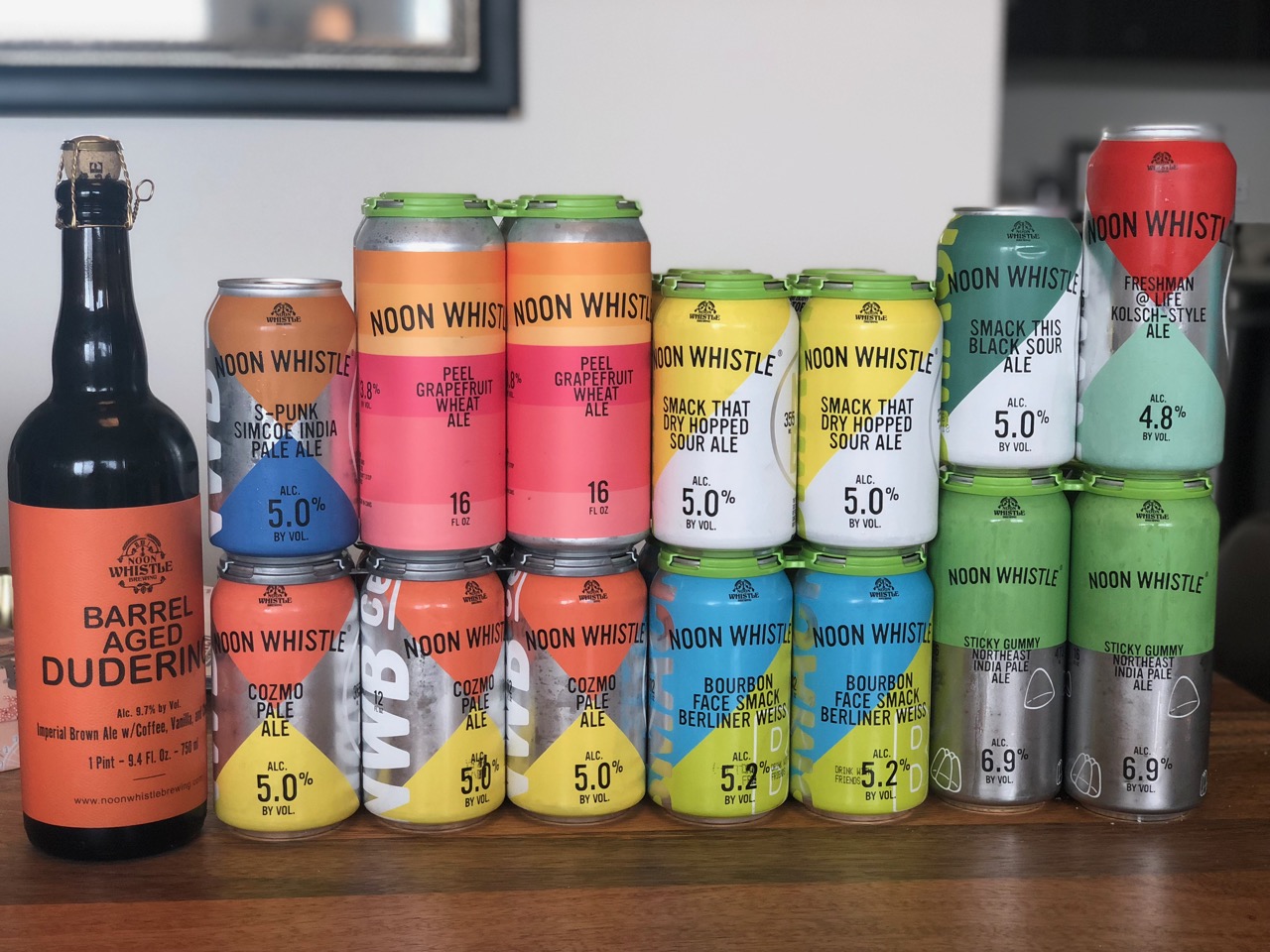
What were the first few days of the brewery like?
P: We opened up the Sunday before Christmas in 2014. We had four beers on tap and we had no clue what we were doing.
M: It was fun because we’d go to the few people drinking at the bar and we’d tell them that we had to come up with names for our beers and they would make the names up for us. At that time we were just trying to fill the draft lines. It was all 5% ABV or less because that was the concept.
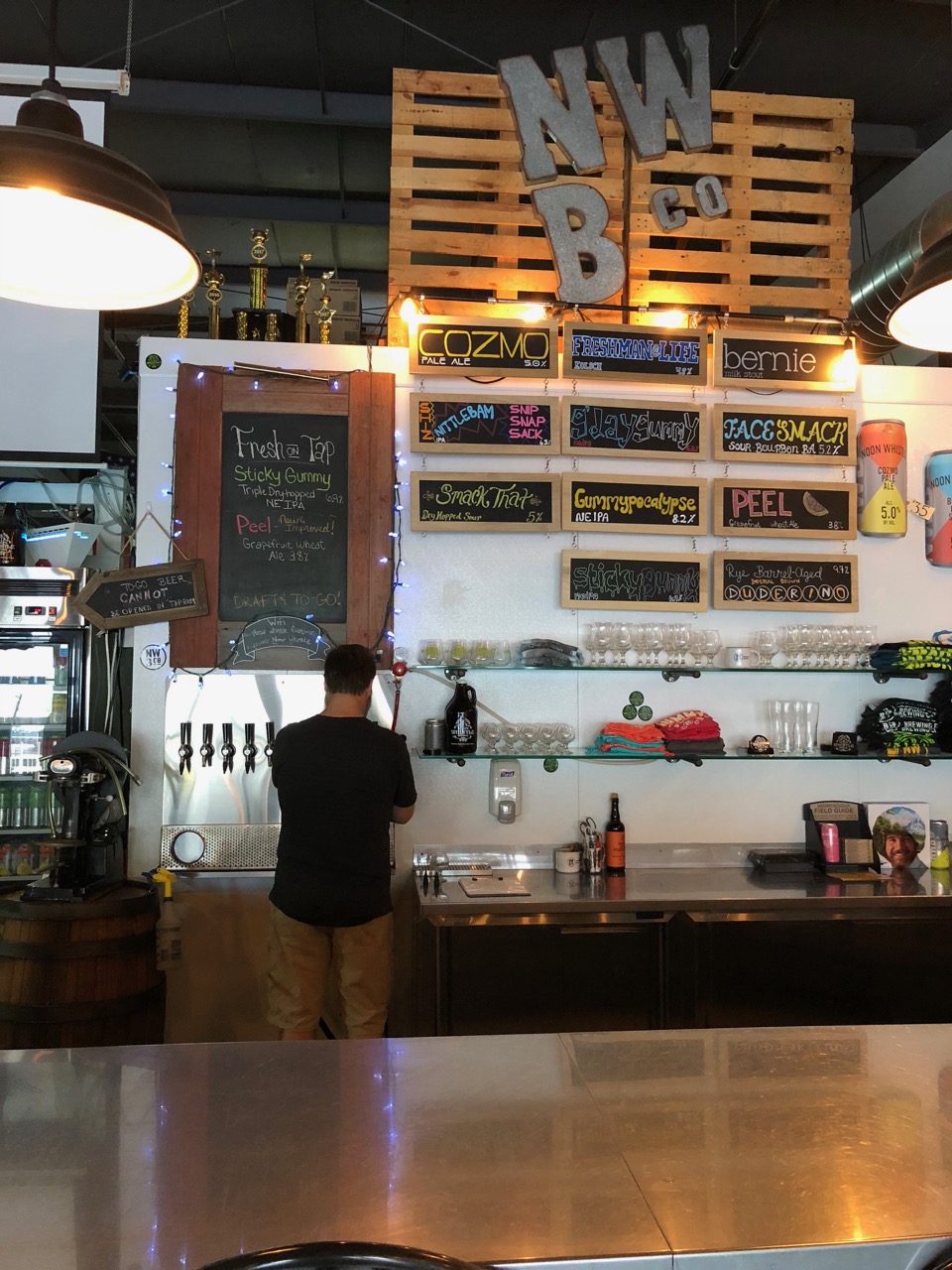
P: I don’t know if I remember much else from the beginning to tell you the truth. I do remember the first day that I came in here. It was only me, Mike was still working. I brewed, I bartended, I did a lot. I wasn’t the only bartender, we had a couple of others, but I remember coming in that first day and just being here by myself and it was a scary, scary time. You know if you go to a job and it’s like this is what you need to do. But you come into this and you need to figure out on your own what you need to do that day. Nobody was there for training.
M: It was different for me because I still worked at my old job. I was doing that full-time until mid-2015. The world for me was so crazy that I don’t think I remember a lot about that time except we needed to get it open. I need to be at this office until 6pm and then I’ll be at the brewery until 10-11pm and I’ll be there on the weekends and that’s every week – just get through the week. That’s pretty much what it was.
P: It was a whirlwind in the beginning. I slept on a lot of grain.
M: We started the brewery with the concept of three buddies who sat down and wanted to start a business together. The reason we started with the sessionable beers was the idea that we like drinking for the social aspect as opposed to just drinking to get intoxicated and that’s why we started the session concept.
You said the concept was behind three buddies who liked sessionable beers – how did you get the name Noon Whistle then?
M: We originally thought about calling it Troika Brewing Company. We were trying to be creative, Troika is Russian and it means “team of 3” and there were three of us so we thought it was cool. Thank god it didn’t go through – it was trade marked.
P: There’s a vodka called Troika and they produce a very small batch just to keep their rights to the name here in the States but it’s produced in Canada.
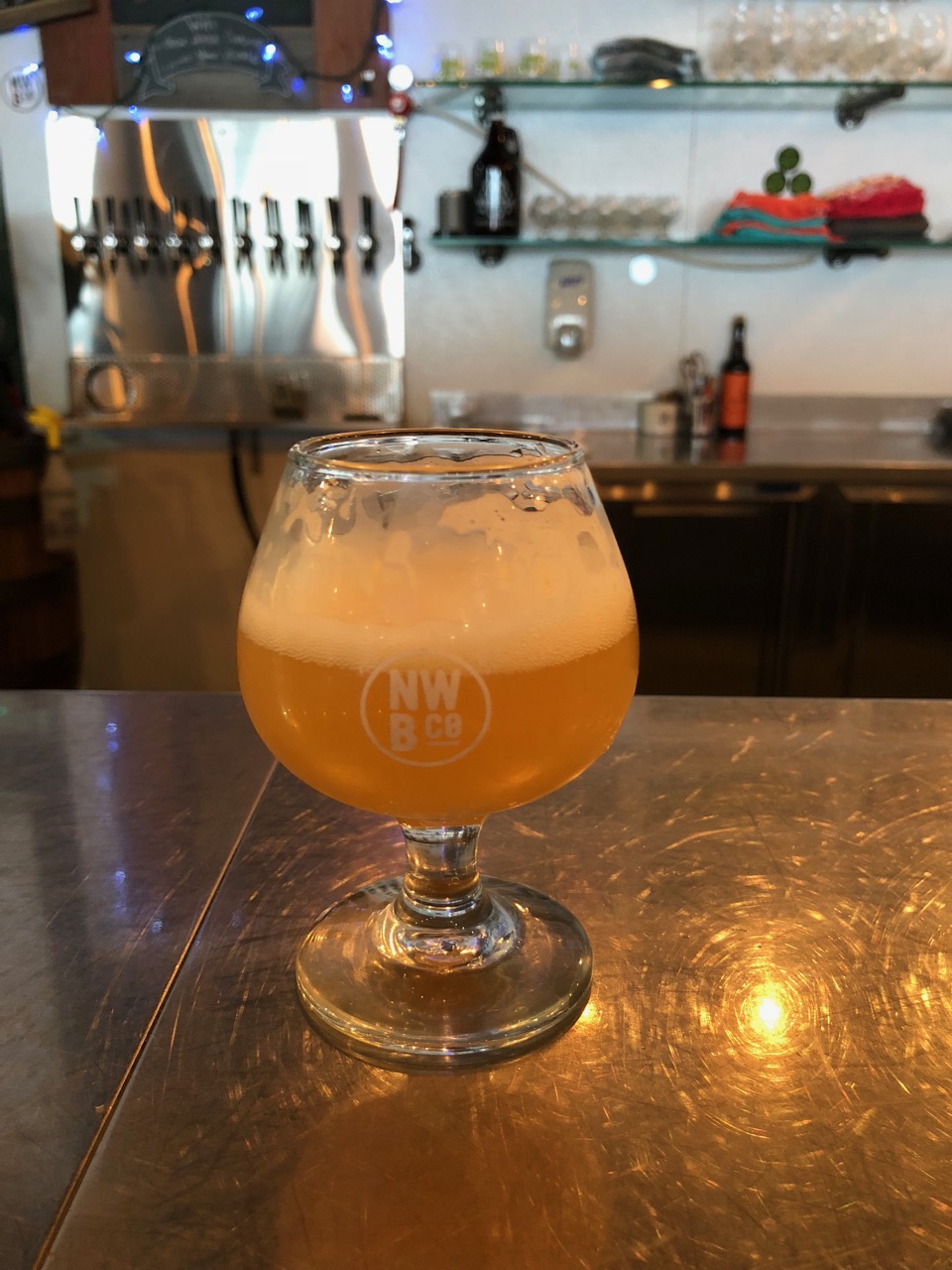
M: So as we were coming up with business names, we had a scroll of all different types of beer names and Noon Whistle was originally going to be one of the beers we would brew because of the session concept and day drinking.
We kept trying to come up with a new business name and we couldn’t come up with anything good and we kept coming back to Noon Whistle and it made sense. It had the story behind it, which was the whistle that would go off in Wisconsin, where Paul went on vacation a lot, and they would wait for this whistle to go off and it would go off at noon and that was the signal to crack the beers and start drinking. That story really played into the idea of our brewery and the brewery evolved from there.
Why did you decide to open up in the suburbs of Chicago?
M: When we were looking to open the brewery there were maybe 30 breweries around here, maybe. There was something like 12 breweries that had just opened. Begyle was one of them, BuckleDown was opening and Solemn Oath had just opened a year prior, so a bunch were starting to pop-up but it was still pretty open. We knew we were going to target the suburbs so we started looking at pockets to see where other breweries were thinking about opening and where they were in their planning.
We were really pushing for Oak Park. It was going to be the location. To the point where we thought we had a space picked out, we were there six months and did the ground work but at the 11th hour it fell through. The landlord had some outside pressure because the space was a month-to-month lease and there was a roller derby team using it and they didn’t want to lose their space. So they really pressured him to keep us out.
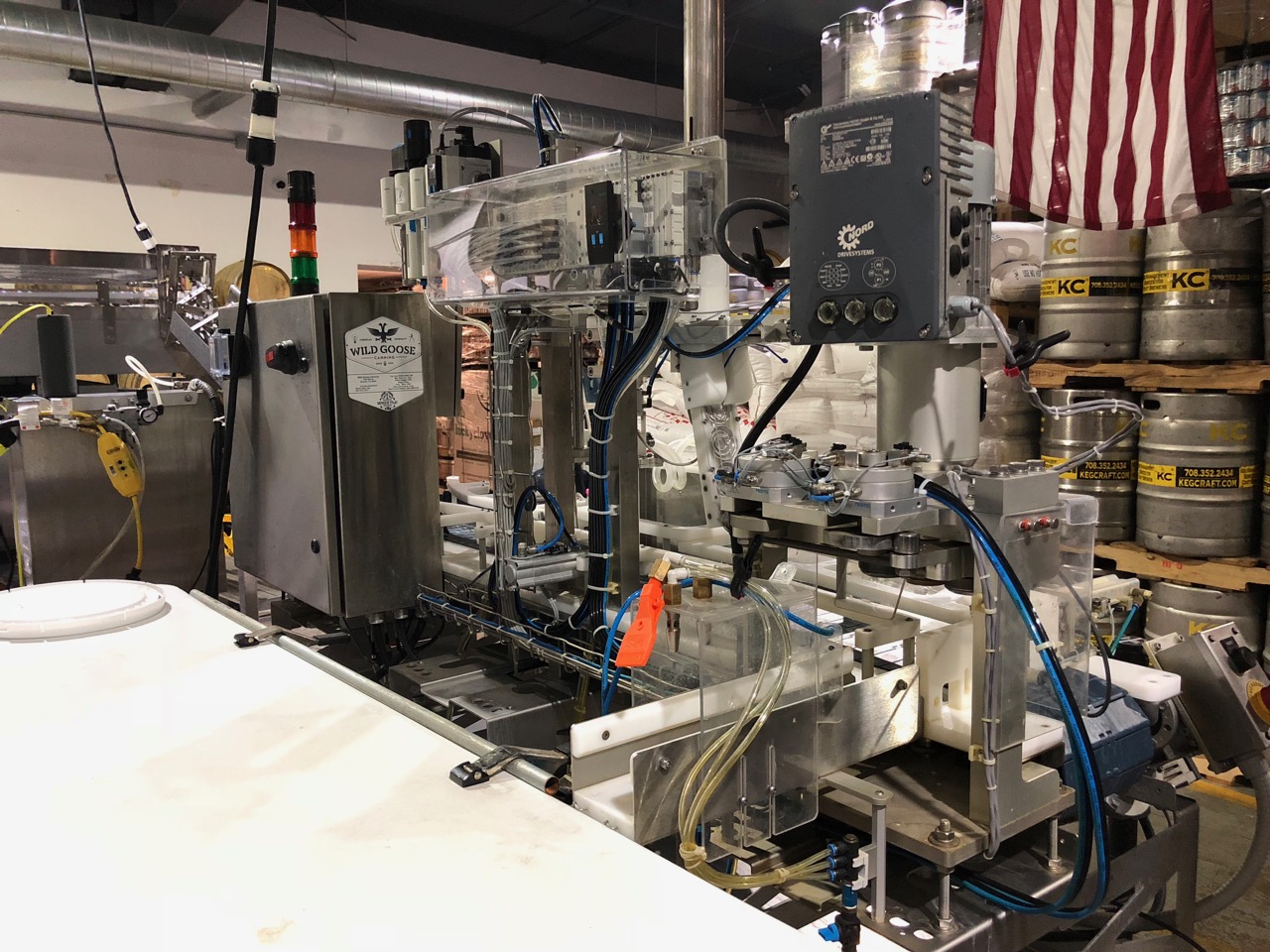
Luckily we were talking to other towns including Lombard and had actually found a couple of potential sites there even though we were focusing on Oak Park. Once Oak Park fell through our broker recommended we double back around to Lombard and they were really welcoming. They (Lombard) were great and have been great and the community has been really supportive.
There’s an expansion planned for the brewery – what are the details?
M: It will give us a lot more space. It will increase the tasting room aspect. We have a lot of folks from the neighborhood that support us and we’ll be able to accommodate more people. We’re the type of people that go into a bar and if it’s jammed pack and we have to fight for a beer…we don’t want that. Don’t get me wrong, we like being busy as business owners, but we never want to be that place where people roll in and it takes them 15 minutes to get a beer. We want it to be relaxed and comfortable so by adding space that it will continue to have a more relaxed environment. We also hope to have a bigger outdoor area, a beer garden out front and take advantage of being outside. It will also take this kids (Paul) vision of being able to do sours and having some fun with wood and take it to another level.
P: Bringing in foeders has been the vision since day one and we’ll be able to finally do that.
You’re also looking to have a production facility on a different site. Where is that at?
M: We’re building hunting. We’re trying to find more space, looking at larger facilities but buildings are hard to find with the space we’re looking for and the specific ceiling heights and just the right spot for a production brewery. We’re still looking in the suburbs – it’s pretty wide open. Hopefully we’ll have an idea where we want to go in the next couple of months and then we can go from there.
If we’re talking about Noon Whistle, we have to talk about the Gummy Series. How did it come to be?
P: We were drinking different versions of hazy NE-IPAs and it’s not like we were drinking them all the time, but we thought they were great.
We made our first batch and we added way too many hops, we added 10 pounds per barrel and I looked at it and realized we couldn’t even sell it outside of these confines. This is way too expensive. Our first batch was good, it was a 15 barrel batch and it was gone in three days. It flew and we were like “holy shit” let’s make another one!
M: We didn’t go into this thinking it would be a series.
P: The Gummy name came because we used a ton of oats and a ton of wheat, just like everyone else, and everything was gummy. It was sticky, everything in there was gummy. We thought that could be a good name and so we started thinking about different adjectives and something else to go along with it because we didn’t just want to call it gummy. That’s how we got Funny Gummy for the first release. The series just went from there. We started doing only crowlers and growlers of it and it kind of took us by storm and just kept going. We didn’t have a vision to go after this market.
M: When we started brewing it was session beers that were popular and then sours. We still want to do sours and they’re something we want to be identified by. Paul thought that the Gummy beer would be something fun to brew and there could be something behind it. Low and behold there was. A month or two later we knew we had to build on it.
There are a lot of folks that are asking us to do collaborations and call it something gummy and we’ve done some. But that’s something on my end that I’m putting a stop to it. We’ll always continue to do collaborations but the gummy name is going to be held to specific Noon Whistle hazy and other stuff that we might do that might be similar, we don’t want the brand to get diluted and people just say “there’s another gummy, and another gummy.” I personally think it’s getting like that a little bit already so we’ll try to back off of it a little bit.
There have been 14 different Gummy variations. How do you come up with each version of Gummy?
P: There are some variations in malt build. Sticky Gummy has a bit more orange hue to it. I use two different yeast strains for different ones. Then it’s hops really.
M: The availability of hops is a big factor, do the hops go well together? Now that we know this style has taken off, we think about different hops and what are popular and what would appeal to beer drinkers. Paul also thinks about what he would like to drink and he comes to us and asks if we would enjoy this type of hop and if it’s something we would get behind.
P: We’ve used a lot of experimental hops in them because I like that and I like bringing different elements to the table. But you only get certain ones, Galaxy is a great hop, but again, there’s only so much out there. I think everyone would want to use Galaxy, but there’s only so much to go around.
M: There’s the other side too that’s all about packaging and what these beers are going for in the market. People see the price of a four pack and are surprised, but the reality of it is these beers really do cost us that much more to make. If we’re using some sought after hops and you’re putting the amount of hops that we think is sufficient. Some of those versions that we’ve brewed Paul has definitely backed down on the ABV and the amount of hops in the beer and you can tell. We try to stay true to form and he has an amount in his head that he needs.
P: We’re at six pounds per barrel for most of them. Sticky was closer to eight pounds per barrel.
M: There you go. You just told everyone your secret.
So on the flip side of things. While Gummy is very popular, you make a lot of other styles of beer. How do you make sure those beers don’t get hidden behind the Gummy series?
M: We make other styles of beer?
M: Good question. That’s my side of the fence. We have two sales guys now and the message has to be pushed that we do have other beers out there. For example, we have sours. It seems that now we’re becoming a more hop-forward or sour brewery and if that’s what people know us for, that’s awesome. At one point we wanted to be that sessionable brewery and we stayed true to that 5% ABV with our cores but we’re not living and dying by that.
It’s really the message to our distributors to continue to push that we have other stuff. Thankfully Gummy is popular enough that what we produce is going out to the market and we have a shortfall. We can go into situations where we can say “I can get you this product and hopefully more of it, but by the way we have these other beers. How can we get it so that we can get more of our beer into your portfolio and rotate some things in?” That’s just the message that we have to keep pushing. We need to continue pouring beer at festivals and showcasing all the other beers that we have.
We joke and say that we’ll build the brand one Gummy at a time. If it gets people to discover Noon Whistle and then at some point they see another one of our beers and realize they’ve never tried it and give it a taste, that’s great. People like beer so they’re going to try it. I think the beer will speak for itself and I think people will realize there’s some consistency in quality and there are other styles here that are also pretty darn good.
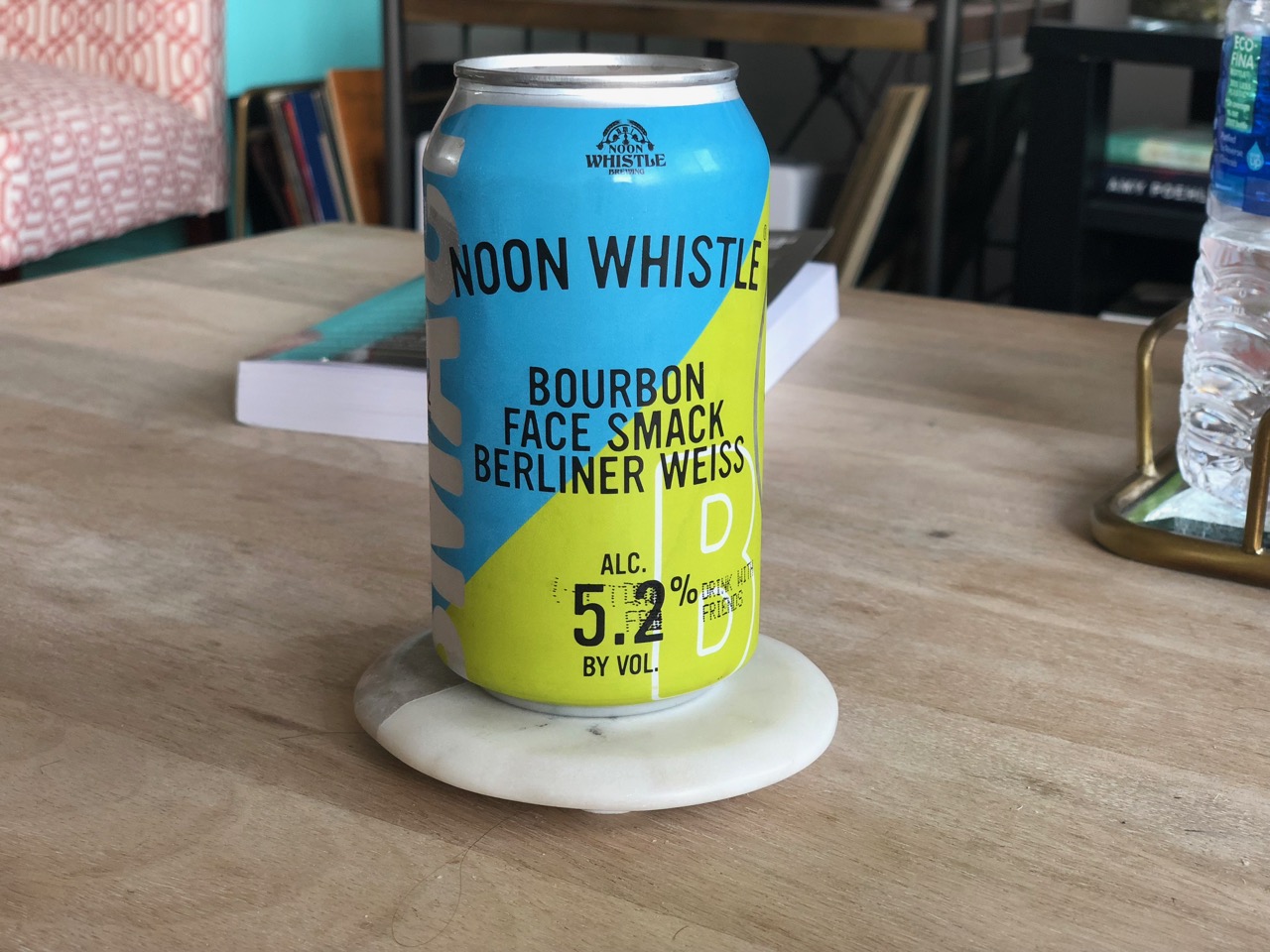
There’s really no secret formula. It’s just about being out there and pushing your product everyday. I don’t need to talk about Gummy everyday. I’ll go talk about Cosmo. It’s a 5% pale ale that we think is awesome. But if you don’t talk about it, in the world of pale ale’s it will get lost.
P: It’s also on the production side. We could just simply make more Gummy – but we won’t. There is the percentage that we’re going to make that is Gummy and there is the percentage of everything else we’re going to make. Our Fuzzy Smack which is our peach Berliner is doing great and we’re trying to produce more of that. We’re trying to fit into those other styles.
M: We’ve been to some places where they won’t stick to their other styles. We were at a brewery, not around here, where everything they had on draft was a hazy IPA or just an IPA. That’s cool, and they are all really good, but as a beer drinker I want more. I know that’s where Paul comes from. There are a lot of different styles out there, a lot of good beers, why would we pigeonhole ourselves to this one? Don’t get me wrong, we’re running a business and we’ll keep making a lot of what sells well. I also think it would get boring for Paul. He didn’t get into brewing to brew just one beer – that would suck.
P: We’re out of space here but that’s why we want to start doing more. We want to make this a sour house, we want to keep up with all the different varieties and have fun with it. That’s what consumers are looking for nowadays. They go to a tasting room, they want at least 10 draft lines, probably 20, because they’re looking for variety.
What are you thoughts as bigger breweries/corporations buy up smaller breweries?
P: I personally think it’s bad for the industry because its diluting what people are seeing out there. I also think that consumers are a lot smarter nowadays in the craft beer industry. They kind of know who’s owned by who. The other question then is do they care or not and I think they do.
I definitely think that it’s still going to keep happening. They’re going to keep trying to dilute everything and I think they’re going to lose control of some brands.
M: I could talk about this for a while. Breweries being bought is one thing, I think there’s a different problem and that’s the sheer number of breweries.
It’s not because I don’t think we can all sustain; I think we’ll figure it out eventually. But at this particular moment with the number of breweries that are opening I think that there is a lot of good beer being made but I also think there’s a lot of bad beer being made and I think that’s being figured out.
P: So we drove to CBC (Craft Brewers Conference) and unfortunately I don’t get out of this place as often as I’d like to try other breweries, but on the way we stopped at a small nano brewery just outside of Nashville and we thought we would stop in for a beer and to check it out. It was really bad and we went into it really excited to try a new small nano brewery and a lot of us couldn’t finish our beers. It was like “holy shit” because there are people sitting here, regular members because we saw they have a mug club, and every single beer we had was not a good representation of craft beer.
M: That’s what frustrates me more than anything. You can talk about breweries being bought and that’s definitely a piece to all of this, but that’s the frustrating thing to me right now. Everybody wants to open a brewery, but make sure you’re doing it for the right reason and you’re putting the craft first. For Paul, this is his life and passion. I’m sure there are other people going into it thinking the same thing but look at yourself in the mirror before you do it and ask yourself if you’re ready.
As for your original question about breweries being bought, I don’t know if it will hurt the industry. Part of you thinks it could improve it to a certain degree because money behind things sometimes can make improvements. But it could also destroy what craft is all about. As more and more breweries open up and get bought up it becomes more of just a business and it loses that personal touch. You don’t want to lose that and there’s that fear.
P: The big breweries know how to fight for shelf space and they’re really good at it. They do it with bigger brands and do it with a different format. They’ll do Bug Light 16 ounce cans, 8 ounce cans and they take up space and they’re really good at that kind of stuff. As the buy up brands they take up more shelf space. We’ll have that argument back and forth about how many breweries can survive. I think the ones that are town-supported and local will do well.
But a lot of people are going into it thinking they are going to go right into distribution and it’s going to be really difficult. There’s only so much shelf space. People go through these sections and see all the beer on the wall and they get lost.
M: There’s only going to be so much shelf space for us littler guys. How many people can get their spot. What sucks is that people who have the passion, have the quality and have the product might just not have a spot. That’s the game we play too. How do we make sure we get our spot?
What’s your favorite style of beer, favorite Noon Whistle, if you’re not drinking Noon Whistle, what are you drinking?
P: I always explain this to people because this is why I got into beer. The reason I got into beer and the reason why I like beer so much is because there are so many styles and I think different beers taste better at different times.
If I’m at a bon fire I’m drinking a different beer than when I’m at the beach. When I drink sours it’s usually my second or third beer because it breaks up that malt and clears my palate. I use them as a palate cleaners and it refreshes me. I drink legitimately all different beers because what’s going on impacts what I’m drinking.
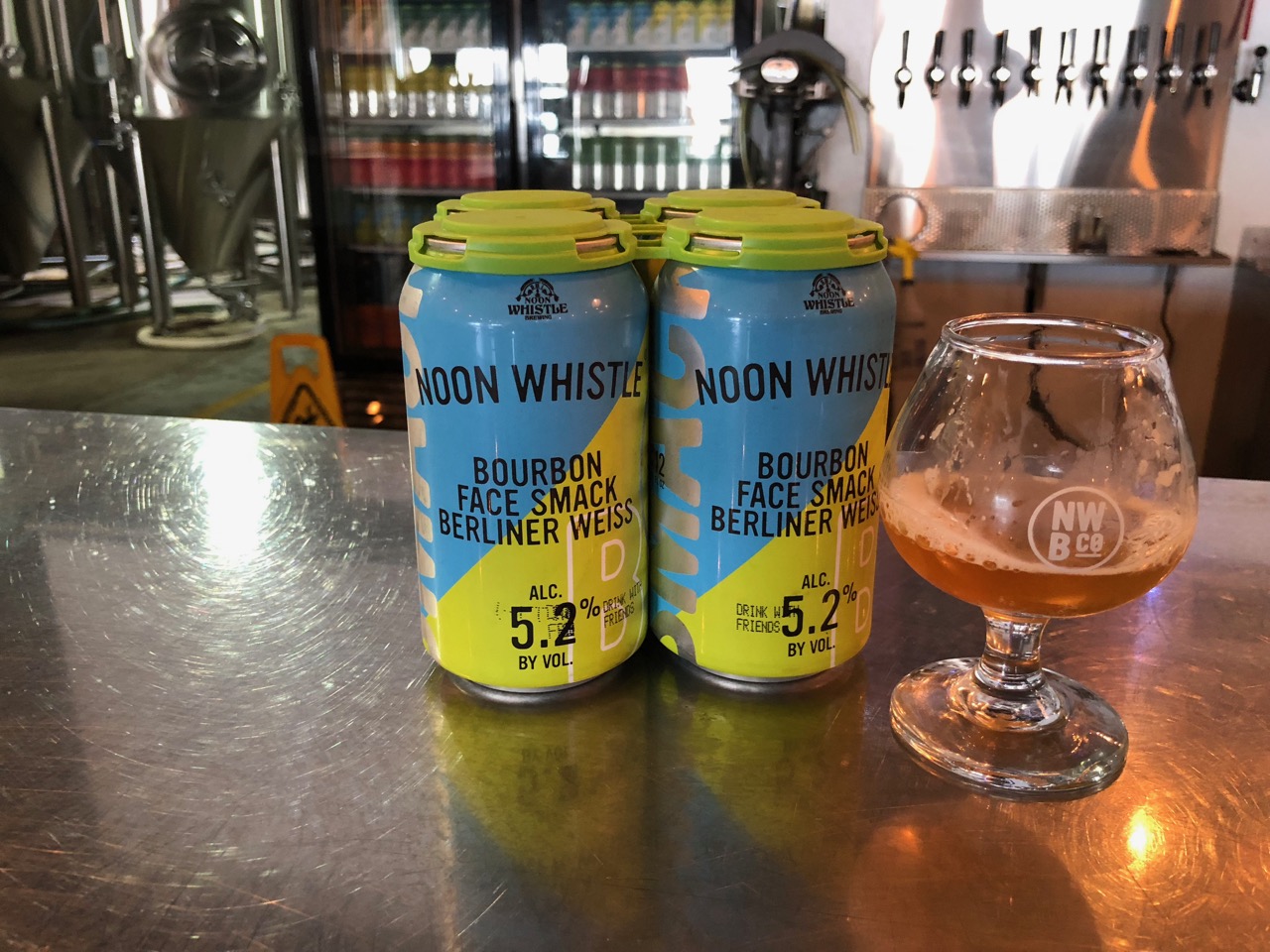
I’ve been drinking a lot of our grapefruit wheat because it’s lower alcohol and I like that because it’s refreshing and I can drink a decent amount of them without being knocked on my ass. Gummypocalypse is one I’m drinking a lot but I’m actually kind of mad at myself because it’s my favorite hop combination that I’ve used in any Gummy combination and I’m pissed off at myself because it’s 8.2% ABV and I wish I would have made it lower. It’s my favorite combination and it’s our highest alcohol.
We drink a lot of other people’s beer here as well. We have Mikerphone dropping off beer and we’re giving them beer, different things like that. We’re trying all different things. We’ll go to the grocery store and buy a bunch of stuff and try as much as we can. I’ve slowly diluted my cellar because I don’t have time to drink it anymore. I do find myself going back to some of my favorites. I still go back to Sierra Nevada Pale Ale if it’s around. It’s one of those go-tos that I love.
What does the future hold for Noon Whistle?
P: Noon Whistle only wants to get so big. We have that conversation a lot. We want to grow bigger than what we are currently, but we only want to get so big.
We don’t want to expand into a lot of states, we’re currently just in Illinois, we’ll probably send some beer to Copenhagen because there’s a bar out there that’s been asking us for some. We might do fun stuff like that, but really right now we don’t have aspirations of sending our beer all over the place.
We want to stay more local and stay as close as we possible can. We still want to stay true and be family-oriented and have fun with it. It’s not conversations about how can we make more beer, how can we grow bigger, instead it’s “are our employees happy?” “are we happy?.” We try to take care of our employees as best we can. They’re turning into family and we want to be able to take care of the people that work with us.


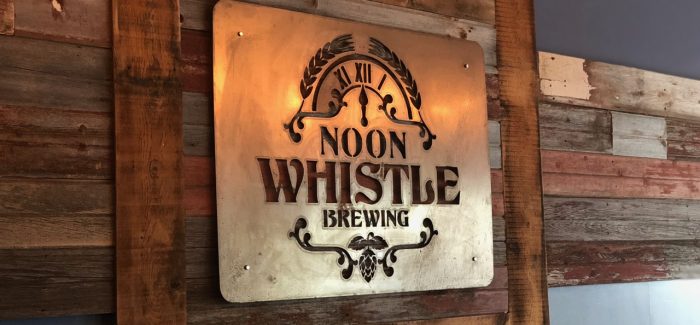

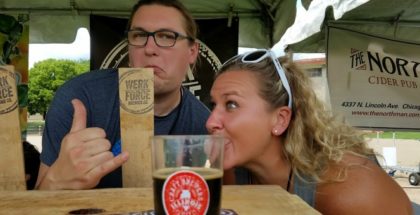
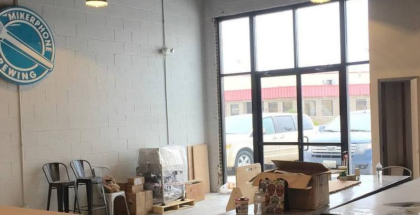
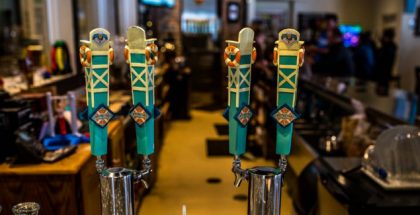
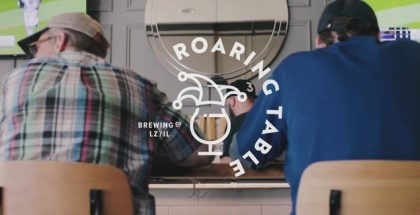
Submit a Comment